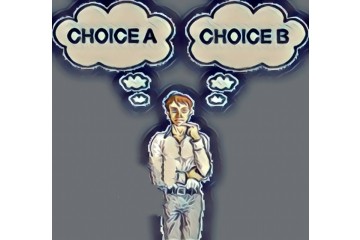Grade 9 Lesson 2: #opportunitycost
All choices in life involve #benefits and #costs. A benefit is what is gained from a decision. A cost is what is given up or lost after a decision is made. The benefits and costs can be amounts of #money or they can be things like how you will feel about a #decision. People identify the benefits and costs behind a decision so that they can choose to do what is best for their needs. At this stage, these concepts must be clear to everyone.
In this lesson, we will learn about #opportunity #costs. Whenever we have to make a decision or make a choice, there is something lost. If we choose one thing over the other, we are missing out on something that the other thing would have given us. Opportunity #cost is the cost of the foregone alternative. It refers to the benefit a person could have received, but did not, because he ‘chose’ to do something else.
To understand this better, we will look at an example. You are having a steady #job with a good income, but your passion is to open your own #business, which requires you to leave your current job, and you have to spend a lot of money on opening a business initially. You have both options. If you are choosing a steady job instead of opening a new business, then your opportunity cost will be not having the work you wanted and maybe success because of the new business. If you start your business, the opportunity cost would be a steady job and a #paycheck from it.
Other examples of opportunity costs are:
• A student spends three hours and $20 at the movies the night before an exam. The opportunity cost is time spent studying and that money to spend on something else.
• A farmer chooses to plant wheat; the opportunity cost is planting a different crop or alternate use of the resources.
• A commuter takes the train to work instead of driving. It takes 70 minutes on the train, while driving takes 40 minutes. The opportunity cost is an hour spent elsewhere each day.
When you give up something to do something else, there is an opportunity cost. Opportunity cost is applied in many decisions in #Economics. When a firm wants to produce something, it must choose between different goods it can produce. If a company wants to #invest in something, it has many choices in which it can invest. Every time it chooses an #investment, it will have some opportunity cost. This is why every time a choice is made, one tries to keep opportunity cost as little as possible. When it is as low as possible, the benefit from making the choice is extremely high.

ayu ecosystem #kids #education #financialliteracy #finance